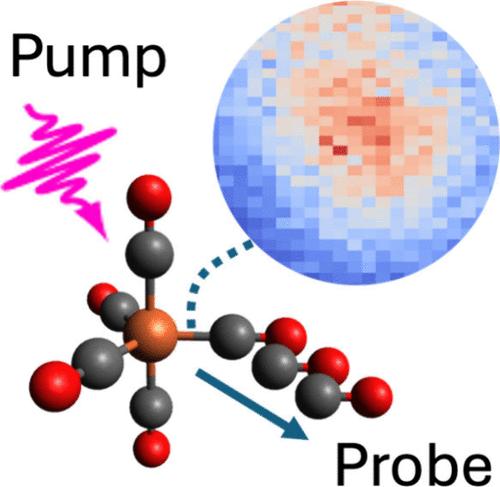当前位置:
X-MOL 学术
›
J. Phys. Chem. Lett.
›
论文详情
Our official English website, www.x-mol.net, welcomes your
feedback! (Note: you will need to create a separate account there.)
Different Photodissociation Mechanisms in Fe(CO)5 and Cr(CO)6 Evidenced with Femtosecond Valence Photoelectron Spectroscopy and Excited-State Molecular Dynamics Simulations
The Journal of Physical Chemistry Letters ( IF 4.8 ) Pub Date : 2024-11-20 , DOI: 10.1021/acs.jpclett.4c02025 Henning Schröder, Michael R. Coates, Raphael M. Jay, Ambar Banerjee, Nomi L.A.N. Sorgenfrei, Christian Weniger, Rolf Mitzner, Alexander Föhlisch, Michael Odelius, Philippe Wernet
The Journal of Physical Chemistry Letters ( IF 4.8 ) Pub Date : 2024-11-20 , DOI: 10.1021/acs.jpclett.4c02025 Henning Schröder, Michael R. Coates, Raphael M. Jay, Ambar Banerjee, Nomi L.A.N. Sorgenfrei, Christian Weniger, Rolf Mitzner, Alexander Föhlisch, Michael Odelius, Philippe Wernet

|
Measured and calculated time-resolved photoelectron spectra and excited-state molecular dynamics simulations of photoexcited gas-phase molecules Fe(CO)5 and Cr(CO)6 are presented. Samples were excited with 266 nm pump pulses and probed with 23 eV photons from a femtosecond high-order harmonic generation source. Photoelectron intensities are seen to blue-shift as a function of time from binding energies characteristic of bound electronic excited states via dissociated-state energies toward the energies of the dissociated species for both Fe(CO)5 and Cr(CO)6, but differences are apparent. The excited-state and dissociation dynamics are found to be faster in Cr(CO)6 because the repopulation from bound excited to dissociative excited states is faster. This may be due to stronger coupling between bound and dissociative states in Cr(CO)6, a notion supported by the observation that the manifolds of bound and dissociative states overlap in a narrow energy range in this system.
中文翻译:

Fe(CO)5 和 Cr(CO)6 中的不同光解离机制用飞秒价光电子能谱和激发态分子动力学模拟证明
本文给出了光激发气相分子 Fe(CO)5 和 Cr(CO)6 的测量和计算的时间分辨光电子能谱和激发态分子动力学模拟。样品用 266 nm 泵浦脉冲激发,并用来自飞秒高次谐波产生源的 23 eV 光子探测。对于 Fe(CO)5 和 Cr(CO)6,光电子强度被视为作为时间的函数,从束缚电子激发态的结合能特征向解离物质的能量漂移,但差异是明显的。发现 Cr(CO)6 中的兴奋态和解离动力学更快,因为从结合激发态到解离激发态的重新填充更快。这可能是由于 Cr(CO)6 中结合态和解离态之间的耦合更强,这一观点得到了观察结果的支持,即在该系统中,结合态和解离态的流形在狭窄的能量范围内重叠。
更新日期:2024-11-20
中文翻译:

Fe(CO)5 和 Cr(CO)6 中的不同光解离机制用飞秒价光电子能谱和激发态分子动力学模拟证明
本文给出了光激发气相分子 Fe(CO)5 和 Cr(CO)6 的测量和计算的时间分辨光电子能谱和激发态分子动力学模拟。样品用 266 nm 泵浦脉冲激发,并用来自飞秒高次谐波产生源的 23 eV 光子探测。对于 Fe(CO)5 和 Cr(CO)6,光电子强度被视为作为时间的函数,从束缚电子激发态的结合能特征向解离物质的能量漂移,但差异是明显的。发现 Cr(CO)6 中的兴奋态和解离动力学更快,因为从结合激发态到解离激发态的重新填充更快。这可能是由于 Cr(CO)6 中结合态和解离态之间的耦合更强,这一观点得到了观察结果的支持,即在该系统中,结合态和解离态的流形在狭窄的能量范围内重叠。


















































 京公网安备 11010802027423号
京公网安备 11010802027423号